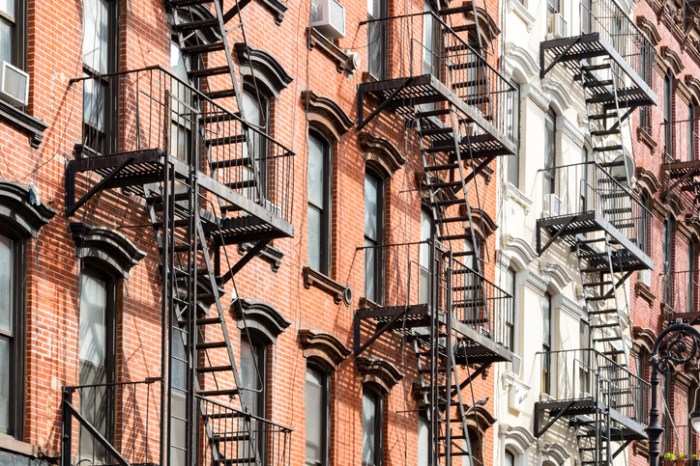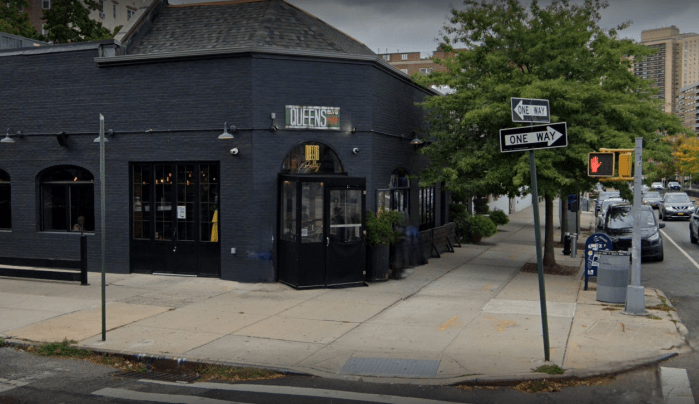By Helen Klein
When Flatbush Gardens was sold in the middle of October last year, it went for a whopping $138,500,000. A Brooklyn-based company, Renaissance Equity Holdings, purchased the 59-building, 2,496-unit complex from the California-based Emmes Group, in a deal brokered by Massey Knakal Realty. The transfer from Emmes to Renaissance Equity Holdings followed by just a couple of years the purchase of the complex by Emmes out of bankruptcy, after the property had been run for several years by a receiver, said Ken Fisher, the attorney for Renaissance Equity Holdings. The receiver, Fisher said, had “started the turnaround” that had been continued by Emmes, and which also included a shift in identity from Vandeveer Estates to Flatbush Gardens. Why did Emmes sell after just a couple of years? The organization, said Fisher, was, “Backed by the Los Angeles city pension system.” While they had, he said, “Put a lot of money into the property and into identifying what had to be done,” because they had a responsibility to retirees to make sure their investment was secure, Emmes “Had an obligation to cash out once the property gained value,” Fisher said. Looking Ahead Fisher strove to make the case that the new owners of Flatbush Gardens would continue the improvements that had been begun by Emmes. “The investor group that bought the complex intends to improve it and to own it for many years to come,” said Fisher. “The property has a troubled history, but we think there’s underlying value there. We are going to be investing significant funds to address some of the problems that have built up over the years.” Specifically, said Fisher, one issue that will be addressed is the, “state of the elevators. We’re in the process of accelerating the work to the extent we can. We are definitely committed to making sure that every building has a working elevator as soon as possible.” One limitation is logistical, he added. “To some extent,” Fisher said, “we are dependent on the fabrication of new parts, some of which are hard to find.” New Location One improvement has already come to pass, said Fisher, who pointed out that the management office had been moved from its old basement location to a street-level site. “They are trying to make it more accessible for the tenants,” Fisher said, noting, “We had some complaints from the tenant leaders that the previous management had not been particularly accessible, didn’t talk to residents.” In contrast, said Fisher, the new management team, “Is very accessible. There’s a tenant advocate,” he added, noting, “We’re looking for a stable community.” There are other changes on the way, said Fisher. The new owners, he said, “Are looking for other opportunities to improve security in the complex and make it a better place for everybody. This is a working and middle class rental property and I think it is going to continue like that for the foreseeable future.” The fate of various programs that have been held or contemplated is largely up in the air, Fisher acknowledged. “I’m still trying to get a handle on what’s out there,” he said, adding, “I met with representatives of elected officials and told them I would like to see an expansion of programs for youth.” But, he stressed, the property is, “A privately owned development. Its principal mission is to provide housing,” not social services. There are also economic constraints, said Fisher. “The property was in bankruptcy for a long time. It needs a lot of work. They are going to look at every aspect of it to see if there are ways to save money. But, if there’s something that’s cost-effective, that benefits residents and is good for the development, we’re all for it.” Tenants’ Perspective The tenants may need more than a bit of convincing that this is the case. Martin Cornish, a tenant leader, said that, at the moment, residents are in need of “basic services. We’re talking about heat, hot water, elevators,” he stressed. Not only is service “not consistent,” said Cornish, but, “In some cases, not at all. My building has been without an elevator since May. The renovation was scheduled to be completed as of January 7th but neither I nor my neighbors have seen any work on the elevator.” While some of the elevator problems date back to the previous owners – “At one point,” said Cornish, “37 out of 59 buildings were without working elevators” – the problem has not abated since the new owners took possession, Cornish said. “A number of elevators have gone off line during the transition period,” Cornish reported, “and are still out of service. We felt the outgoing ownership didn’t want to spend money on the repairs knowing the property was going to be sold.” With the new owners, Cornish went on, “We’re concerned. We can see a difference already in terms of timely repairs of apartments. We are concerned about building maintenance which has not been consistent.” It took a month of persistent reminders to get a single instance of graffiti painted over, said Cornish, and three weeks to get a hall light bulb changed. “Last week, we went three days without hot water,” Cornish reported, a situation that he said affected a minimum of 10 buildings in the complex. “There are some good things that did happen,” Cornish added, “but right now they are being overshadowed by the lack of basic services.” “Transition After Transition” In general, said Cornish, who has lived at Flatbush Gardens since 1971, a major concern is the constant shift in management, “The many landlords that the complex has had over the years. I’ve seen transition after transition,” recalled Cornish. “The property had just gone to pot. There was an approximately 60 percent vacancy rate before Emmes. Now, there’s an approximately 98 percent occupancy rate, but there are promises that haven’t materialized. “When Emmes had the property, we saw the light at the end of the tunnel, but Emmes seems to have sold us a bill of goods for two years and disappeared,” Cornish went on. “I don’t want to return to the conditions we had before. This is a very diverse neighborhood, home to everyone from home attendants to doctorates and everything in between. It’s a stable, working class neighborhood and I’d like to see it stay that way where everyone can be comfortable. It’s to the landlord’s advantage, as well as to the residents’.” But, said Cornish, residents are dissatisfied. “I have a number of neighbors looking forward to the end of their lease because they didn’t bargain into moving into a building without an elevator,” he reported. “This is taking its toll on residents, not to mention the elderly, the physically challenged, people with young children.” On Her Way Out One of those who is planning to move shortly is Glynis Hudson. “I’m really very unhappy,” she confided. “Emmes sold us a bill of goods, and made good on none of it. Now that we have new owners, I don’t know if they will pick up on the promises that have been made, repairing the elevators, and providing for the safety of residents. Overall, it’s a bad situation. The buildings are poorly managed and maintained. It’s not a good place to raise a family.” One particularly irksome issue for Hudson is the condition of the elevator in her building. “At the end of October, a ceiling panel in the elevator was missing. I called everyday, because twice I had to stop children from trying to climb up there. But, we weren’t being taken seriously, so I called the city. They came and put a big sticker on the elevator saying that it was unsafe to ride in. People still rode in it because they didn’t have a choice, especially the elderly and people with large carts. I thought that, with the city paying attention, the owners would give it a little higher priority, but it’s still the same way, and now it doesn’t work at all. It’s just bad, and they don’t care.” Petra Rossman, a member of the Flatbush Gardens tenants association, also has her complaints, including lack of elevator service in her building. “From what I know, since the new owners took over, nothing has been done,” said Rossman. “They don’t clean anymore. From my point of view, the building is going to get worse. It seems like they are trying to get rich and then move on. Under the new management, I don’t think they care if the buildings fall down or not, as long as they get the rent.” It’s not just tenants who are taking a wait-and-see attitude toward the complex’s new owners. Assemblymember Nick Perry also expressed concerns about the change in ownership. While, he noted, “I’m not really able to say anything substantive because I haven’t had the opportunity to meet personally with these folks and get a feel of what they are all about,” Perry said, “I’ve been informed that they want to continue the improvements, which is positive, but I am sort of skeptical till I see more indications that that is absolutely going to happen. If real estate values keep skyrocketing as they have been, I see no reason why the new owners might not flip the property. The folks who just flipped it to the new owners made a substantial profit on it, and they held it only for a short period of time.” This possibility, said Perry, is cause for concern. “I believe the community is in jeopardy if they don’t stabilize the ownership,” he acknowledged, noting that he would like to push a plan whereby the state would help the residents buy their apartments through some sort of subsidized condo conversion with the state holding the mortgages. “This is something I’m going to ask the folks in Albany to look at,” Perry added. “It could be a model. I really believe the opportunity to just flip the property and just make it a pawn in a big profiteering arrangement jeopardizes the community, the private homeowners as well, because a period of neglect could lead to blight.” Flatbush Gardens is located on a 20.64 acre site in an area roughly bounded by Foster Avenue, Brooklyn Avenue, Newkirk Avenue and Nostrand Avenue.

































